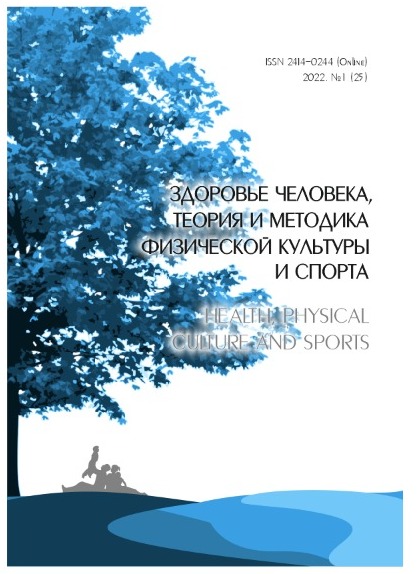Двигательная активность студентов и ментальное здоровье: грани соотношения
Abstract
The ratio of physical activity of students and mental health, as well as stress as one of the main affective factors, is studied. The role of motor activity as an effective way to deal with stress is considered. The role of sports and physical activity in improving cognitive abilities, developing attention, working capacity, memory, stress resistance, the ability to concentrate and perceive new information that are relevant in the learning process is emphasized. In addition, physical activity contributes to the prevention and treatment of non-communicable diseases such as cardiovascular disease, cancer and diabetes, reduces symptoms of depression and anxiety, thus promoting healthy growth, youth development and overall well-being.There is a negative effect of stress on the neurochemical balance in the body, as well as a positive effect of physical activity on the stimulation of the production of a number of hormones and neurotransmitters, the harmonization of the endocrine system. In a study conducted in 2021 on the basis of Altai State University, the methods of questioning, monitoring, analysis, synthesis and generalization were applied. A pedagogical analysis of the study was carried out. In the course of the study, conclusions were drawn about the existence of an objective relationship between the volume of physical activity and mental health, which is expressed in the improvement of these mental and emotional indicators. The conducted research confirms that sports and physical motor activity are considered by students as an effective method of dealing with stress, improving both psychological and physical well-being. Analysis of the results of the study shows that sports and physical activity are used by students to reduce stress, as well as anxiety and anxiety, which entail a high degree of nervous tension. The role of sports, both single and team, as a factor that positively influences the formation of positive self-esteem and self-confidence has been studied. Separate types of sports used by students to reduce stress levels are identified and concretized.
Downloads
References
Волосатых О.О. Влияние стрессоустойчивости и волевого контроля тренера на личностные качества спортсмена // Теория и практика физической культуры : научно-теоретический журнал. 2006. №11. С. 11–13.
Всемирная организация здравоохранения. Информационные бюллетению. Психическое здоровье(дата обращения: 05.11.2021).
Ермакова Е. Г. Формирование позитивной самооценки студента посредством участия в командных видах спорта // International Journal of Humanities and Natural Sciences. 2020. Vol. 4-1 (43). C. 53–56.
Ермакова Е.Г. Влияние физических упражнений на умственную деятельность человека и их взаимосвязь // International Journal of Humanities and Natural Sciences. 2019. Vol. 10-1 (37). С. 44–46.
Карпенко Л.А., Петровский А.В., Ярошевский М.Г. Краткий психологический словарь. Ростов-на-Дону : Феникс, 1998.
Максимова Е.Н., Алексеенков А.Е. Физическая активность и психическое состояние человека // Наука-2020: Физическая культура, спорт, туризм: проблемы и перспективы. 2020. № 4(29). С. 73–76.
Мандриков В.Б., Ушакова И.А., Замятина Н.В. Физическая культура как средство адаптации студентов // Актуальные вопросы физического воспитания молодежи и студенческого спорта : сборник трудов Всероссийской научно-практической конференции / отв. ред. С.С. Павлекович. 2019. С. 503–506.
Романчук Н.П., Пятин В.Ф. Мелатонин: нейрофизиологические и нейроэндокринные аспекты // Бюллетень науки и практики. 2019. Т. 5, №7. С. 71–85.
Хаснулин В.И. Особенности психоэмоционального стресса у жителей регионов Севера и Сибири с дискомфортным климатом при высоком и низком содержании гормонов стресса в крови // Мир науки, культуры, образования. 2012. №5 (36). С. 32–35.
Copyright (c) 2022 Health, physical culture and sports

This work is licensed under a Creative Commons Attribution-NonCommercial 4.0 International License.
An author should not normally publish manuscripts describing essentially the same research in multiple journals or publication venues. Such redundant publication is generally considered to constitute unethical publishing behavior, and if discovered may result in a manuscript under consideration being rejected, or a published article being retracted.
Authors of manuscripts reporting on original research should present an accurate account of the work performed, accompanied by an objective discussion of its significance. Underlying data should be represented accurately in the manuscript. The manuscript should contain sufficient detail and references to permit others to replicate the work. The fabrication of results and the making of fraudulent or knowingly inaccurate statements constitute unethical behavior and may be cause for rejection or retraction of a manuscript or published article.





